Juventud Rebelde 221
Caravanistas visit Denunciation Memorial

Members of Pastors for Peace caravan visit memorial in Cuba
The visitors learned historical facts about Washington’s aggressiveness against the Caribbean nation, and rejected that power’s interference in the island’s internal affairs.
Author:

Juventud Rebelde | digital@juventudrebelde.cu
Posted: Tuesday 16 November 2021 | 03:35:42 pm.
Translated and edited by Walter Lippmann for CubaNews.
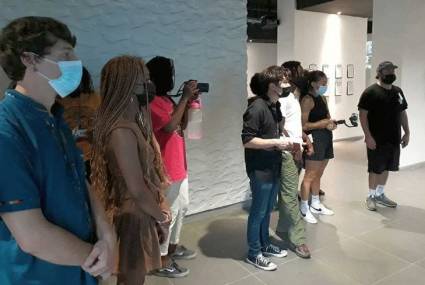
Members of Pastors for Peace caravan visit memorial. Autor: PL Publicado: 16/11/2021 | 03:34 pm
Members of the U.S. interfaith organization Pastors for Peace arrived today at the Denunciation Memorial , in this capital, as part of its program of activities in solidarity with Cuba.
The visitors learned historical facts about Washington’s aggressiveness against the Caribbean nation, and rejected the interference of that power in the internal affairs of the largest Antillean island. In declarations to local television, the caravanistas recognized Cuba as an example and ratified their support to the socialist project.
The day before, the activists arrived at the capital’s José Martí International Airport. Upon their arrival, the director of that group, Gail Walker, stated that the 75 visitors from 20 U.S. states joined the 31st edition of these initiatives to show the majority feeling of the U.S. people with respect to Cuba.
She pointed out that her companions are especially interested in learning about the achievements of this Antillean nation in confronting the COVID-19 pandemic, in the midst of the tightening of the economic, commercial and financial blockade and other aggressions by the U.S. government.
During their stay until November 26, the members of Pastors for Peace will carry out an intense agenda in the provinces of Havana and Matanzas (western Cuba), which includes meetings with women’s and workers’ organizations, and tours of educational institutions of historical and social interest, according to PL.
Nicaragua: the past counts

Nicaragua: the past counts
The Sandinista authorities have called for general elections today, but the U.S. and its allies will not want to recognize them.
Author:

Marina Menéndez Quintero | marina@juventudrebelde.cu
Translated and edited by Walter Lippmann for CubaNews.
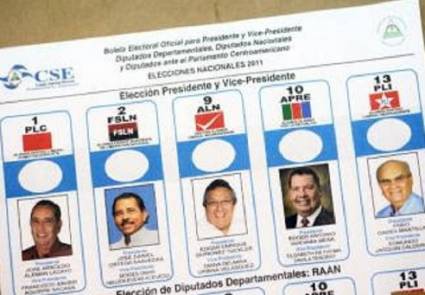
The Sandinista authorities have called for general elections today, but the US and its allies will not want to recognize them. Author: CSE published: 06/11/2021 | 09:33 pm
New sanctions against Nicaragua approved this week in the U.S. Congress, draw the real scenario in which today’s presidential elections take place: a scenario of harassment and undeclared war, which would seek to use the elections as a springboard for full interference.
The Renacer (Reinforcing Compliance with Conditions for Electoral Reform in Nicaragua) Act has just been approved by the House of Representatives and has already passed through the Senate, so it only awaits the approval of President Joe Biden.
Its harmful nature seeks to involve the European Union, Canada and Latin American and Caribbean neighbors in further cutting off loans from international financial institutions to Nicaragua, review its participation in the free trade pact between the United States, Central America and the Dominican Republic (Cafta-DR), and selective sanctions against Nicaraguan officials considered by the North to be “violators” of human rights, among other measures.
Its rapid passage through the lower house a few days before the presidential elections, confirms the presence on the proscenium of an invisible “candidate” whose determination is to overthrow a model that has given citizens more satisfaction than pain since the triumph of the Sandinista Revolution in 1979, which meant the end of the murderous dictatorship of Anastasio Somoza.
A decade later, that same phantom actor was the real protagonist of the defeat of Sandinismo at the polls on February 25, 1990, by promoting and financing an alternative personified as a solution to the naval blockade and the “contra” war -that is how the counterrevolutionary gangs were known-, which that same hegemonic intruder promoted and armed.
In search of peace, the votes then lost by the FSLN went to the so-called National Opposition Union represented by Violeta Barrios de Chamorro: the White House had made it clear that the presence of Sandinismo in power would mean more aggression.
There followed 16 years of corrupt and complicit executives allied with US decisions, which led to the extinction of all the measures implemented by the FSLN to alleviate the social backwardness enthroned by Somocismo, and the minimal but important steps taken in the economic field.
These anxieties, and a policy of alliances that untangled traditional entanglements with key sectors of society, such as the upper hierarchy of the Catholic Church and private enterprise, made possible the return of the FSLN to power in 2007.
It was necessary to launch another literacy campaign because a new generation had grown up without the facilities to learn to read and write, restore access to public health, and reimplement measures to support the peasantry, where the majority of the social base is located.
Stability and results in the economic sphere through a mixed economy system, accompanied by a policy of regional cooperation in a Latin America where similar models of solidarity and social justice had emerged, characterized the work of an FSLN that changed its image from red and black to fuchsia, but has kept the essence of its ideals unchanged.
By April 2016, the IMF, the watchdog of international financial policies, and propitiator of onerous indebtedness, would ratify the recognition it had made to Nicaragua seven years earlier: “The Nicaraguan economy continues to register high growth rates and sustainable macroeconomic policies. In 2015, the Gross Domestic Product (GDP) grew 4.9 percent and the average of the last five years (5.2 percent) is one of the highest in the region.”
But the bonanza would last until the next boom. By 2017, together with the third consecutive reelection of Sandinista leader Daniel Ortega and in the run-up to the November municipal elections that year, the U.S. Congress was already preparing the Nica Act, the first in a series of sanctions that would follow.
Finally approved in 2018, the law officially named the Nicaraguan Investment Conditionality Act sought to block loans from international financial institutions to Managua, among other punitive measures, unless it took “effective measures to hold free, fair and transparent elections,” argued its promoters of the Cuban-born Floridian ultra-right, as deceptively as it is done against Venezuela or against Nicaragua itself, again, right now.
Daniel Ortega’s response was consistent with the circumstances. It was, he denounced, “the continuity of historical policies of US imperial interference in Nicaragua”, which is what we see today.
History that is present
That, however, was not the only flank of aggression. In April 2018 itself, the unusual and massive demonstrations with which hundreds of Nicaraguans took to the streets after the triggering of a social security reform that had immediately been repealed, constituted the implementation in Nicaragua of a chapter of unconventional warfare that had already been tested in Eastern Europe and in some countries of the Middle East: “color revolutions” that are really very dark, and plunged Nicaragua into months of instability with its share of arrested, dead and wounded.
Money sent from the U.S. to foment opposition and subversion had been flowing through subway channels for some time, as in the late 1980s.
According to investigations cited by the site Misión Verdad, only to support a communication network that would sustain the media strategy against Sandinismo, some ten million dollars have been channeled through the US Agency for International Development (USAID) since 2009. Seven million of that total went to the so-called Violeta Barrios de Chamorro Foundation for Reconciliation and Democracy between 2014 and 2021.
The article calls the Foundation “a central vehicle for Washington’s massive financial, technical and logistical support to the Nicaraguan opposition, acting as what the CIA calls a “staging post”: a third-party organization that serves as an ostensibly independent channel for giving U.S. government funding to foreign political groups and media outlets.”
In total, it is estimated that since the Sandinista return to power, Washington has channeled tens of millions of dollars to the same cause.
However, the country is now accused of being a flawed democracy that disrespects human rights, a term that has been politicized and manipulated for decades. It is the same justification used to demonize and attack models of change in the face of the status quo of unbridled capitalism, which the right-wing powers would like to maintain globally.
Such background is essential to understand what is happening this Sunday around an electoral race for president and deputies which is questioned by the absence of right-wing candidates accused of corrupt management and of facilitating US interventionism; among them, two bear the last name of Chamorro.
In spite of the fact that some headlines are propagating that “there are no candidates” -a false assertion which could have penetrated part of the electorate since some of the polls, which were already wrong in Nicaragua in 1990, announce high abstention- five opposition candidates are competing against the FSLN and Daniel Ortega. Some of them are nominated by long-standing and experienced groups such as the Constitutionalist Liberal Party and the Independent Liberal Party.
The registry, the tables and ballots have been ready for some time now, and some 200 international observers will act as observers to attest to the transparency.
Everything seems to be in order. But that is not what the United States would like.
What Adele looks like now

What Adele looks like now and what her new album will bring us
The British diva is working on a new album, and has issued statements about her makeover and upcoming plans
Author: Juventud Rebelde|digital@juventudrebelde.cu
Posted: Saturday 09 October 2021 | 10:33:28 am.

Adele has posed for Vogue, as part of the promotion of her new album. Autor: Pictwitter Publicado: 09/10/2021 | 10:32 am
Translated and edited by Walter Lippmann for CubaNews.
British singer Adele has revealed details about the recording of her new album, 30, whose lyrics will be very attached to her divorce process and personal self-improvement, according to international media.
Adele, in addition to impressing with her renewed slim image, has confessed to several media that she became addicted to exercise several years ago and assured that all the diets that were invented using her image are false. It was physical activity that made her lose 45 kilos and she also talked about the role that her divorce played in her transformation.
The 33-year-old Brit recently starred on the cover of Vogue magazine and referred that exercise helped her fight an anxiety disorder.
“It was because of my anxiety. By exercising, I felt better. It was never about losing weight, it was always about getting strong and spending my time every day without my phone. I became pretty addicted. I exercise two or three times a day,” she revealed, Sputnik news quotes her as saying.
It has been almost six years since Adele released 25, her last studio album. Thus, her return to music has become one of the most celebrated events in the music industry so far this year.
“I feel like this album is self-destruction, then self-reflection and then sort of self-redemption. But I feel prepared. I really want people to hear my side of the story this time,” the singer has said.
(With information from Sputnik news and Vanguardia)
Magali Llort has passed away

Magali Llort, a reference in the struggle for the liberation of the Five Heroes, has passed away
The Cuban Institute of Friendship with the Peoples paid tribute to the mother of one of these young Cubans, who spent more than 15 years in prison for alerting her country about Washington’s violent plans.
Published: Friday 24 September 2021 | 12:31:59 am.
Author:
Translated and edited by Walter Lippmann for CubaNews.
 Cuban activist Magali Llort, a reference in the struggle on the island for the return of the five heroes who were imprisoned in the United States due to their anti-terrorist activities, died Thursday, reports Prensa Latina.
Cuban activist Magali Llort, a reference in the struggle on the island for the return of the five heroes who were imprisoned in the United States due to their anti-terrorist activities, died Thursday, reports Prensa Latina.
The Cuban Institute of Friendship with the Peoples (ICAP) paid tribute to the mother of one of these young Cubans, who spent more than 15 years in prison for alerting her country about Washington’s violent plans.
Through its website Siempre con Cuba (Always with Cuba), the institution also recalled Llort’s trajectory as a revolutionary and congresswoman who deserved different recognitions.
“Magali, a loving mother, did not like the media to talk about her, preferring instead to denounce the injustice committed against the Five, of whom she said that they were all her children,” the website says.
Recently, the president of Cuba, Miguel Díaz-Canel, recalled the 23rd anniversary of the imprisonment of the five anti-terrorists in the United States and pointed out that the struggle for their liberation revealed to the world the aggressions against the Antillean country.
Our Duty is With the People

Our Duty is With the People
Members of the National Special Brigade are grateful for the support and encouragement of the vast majority of the population during the violent actions that occurred on July 11.
Published: Thursday 29 July 2021 | 08:17:21 pm.
Author: Santiago Jerez Mustelier 
Translated and edited by Walter Lippmann for CubaNews.
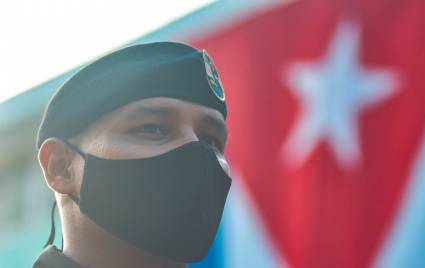 When he arrived at 20 de Mayo Avenue, in Havana, the first thing he did was to join the formation of the cordon. He did not expect a disproportionate reaction from some of the provocateurs, who sought to advance towards the Plaza de la Revolución.
When he arrived at 20 de Mayo Avenue, in Havana, the first thing he did was to join the formation of the cordon. He did not expect a disproportionate reaction from some of the provocateurs, who sought to advance towards the Plaza de la Revolución.
It would never cross the mind of Lieutenant Luis Angel Rosales, of the National Special Brigade of the Ministry of the Interior (Minint) that he and his comrades would be attacked with stones, sticks and Molotov cocktails. In his 11 years of experience in this agency, he says he has never witnessed such strong events.
“What gave us joy was to see the response of a great majority of the people: they chanted slogans together with us, raised flags, wielded posters and photos of Fidel, Raul and President Diaz-Canel. I reaffirmed that Cuba is one people, a cohesive nation”, says the 29-year-old agent, and in contrast recalls that they had to endure insults, threats of lynching and open provocations.
Now that the riots of last July 11 are rough memories lodged in his head, he says that “that day there were stones thrown from the crowds that affected agents of the brigade. I belong to the canine unit and one of our dogs was also hit, so he was off duty days ago, but he has recovered”.
Lieutenant Rosales explains that the “Gallos Finos” (as they are also known) are not trained to hit or kill. Their limits of action are in strict respect to the Constitution of the Republic, to the legal order and to the rational use of force.
“Those arrested in that area of the actions were instigators of attempted vandalism and criminal attack. They were in contempt of court or made attempts against officers. Most of them had criminal records. The rest of those who were there were neither arrested for demonstrating in a civic manner nor for filming at the site,” he says.
A lot is posted on social networks. Much is said in conferences and statements by foreign politicians. The headlines and front pages of the main and most influential media have twisted almost all the truth and placed manipulated photos and videos to absolutely accuse the forces of order of lack of restraint and create an opinion matrix of chaos and disorder in Cuba.
The backing of the White House did not take long to arrive: [accusations of] coercive measures by the Minister of the Revolutionary Armed Forces and Hero of the Republic of Cuba, Army Corps General Alvaro Lopez Miera and the members of the National Special Brigade of the Ministry of the Interior.
“Joseph Biden is categorically wrong -assures the young lieutenant-. Our main mission is the defense of the people, so that citizens can walk and perceive tranquility and security in the streets. We cannot allow the imposition of the terror that the Miami mafia and the anti-Cuban congressmen want for our land.
“This is the first time, since I have been here, that such a complex event has taken place. If it were to happen again, we would be there to safeguard and protect the people, of which we are proudly a part,” Rosales asserts, while emphasizing the participation of rescue and salvage groups of troops in localities devastated by natural disasters, as they were in those that occurred in Ecuador and Dominica.
“In the face of any meteorological phenomenon, we will also go out to support people, as we did when the tornado demolished Diez de Octubre or in situations of flooding in the capital’s coast”.
A dozen publications on social networks have made false reports of protests in recent days, which Rosales denies. He shares his certainties: “Here there is a Revolution that stands firm, calling for unity, peace and love among all, trying to solve the problems of vulnerable communities and families; a country in total calm, dealing with a blockade proud to destroy us, working with will and dedication to contain the pandemic and move forward”.
***
“What do I take away from what happened on July 11? The respect and gratitude of the people, the applause they gave us on our arrival, the signs of support they showed us by approaching us and talking to us”, says Yan Carlos Boza (22 years old), an agent of the National Special Brigade, in a conversation with this newspaper.
The Santiago native has been a member of the troops for ten months. The events he witnessed marked him. He was first in San Antonio de los Baños. Then, he was incorporated into positions before the Plaza de la Revolución.
“When we arrived in San Antonio there was a lot of commotion, people were restless, nervous, confused by what was happening. Sometime later, calm ensued. The appearance of our President was a great encouragement for those present and a demonstration that the Revolution is always at the side of the people, listening, dialoguing, clarifying and rectifying when necessary.
“We saw signs of affection for the dignitary, of confidence that everything was going to be solved. The people’s opinion of our presence was very positive. It gave us strength and impetus to continue defending the conquests that cost so many young lives.
“At no time was anyone repressed. There we reaffirmed patriotism, the moral and ethical values instilled in us by our relatives and the training as part of the special brigade,” Boza narrates with emotion.
“Our participation together with the people was decisive. We have a high responsibility in guaranteeing the security of the country and its citizens. On that occasion, difficult to forget, I truly understood the essence of the National Special Brigade: to defend, from our condition of humble people, with courage and determination, the future of the Homeland”.
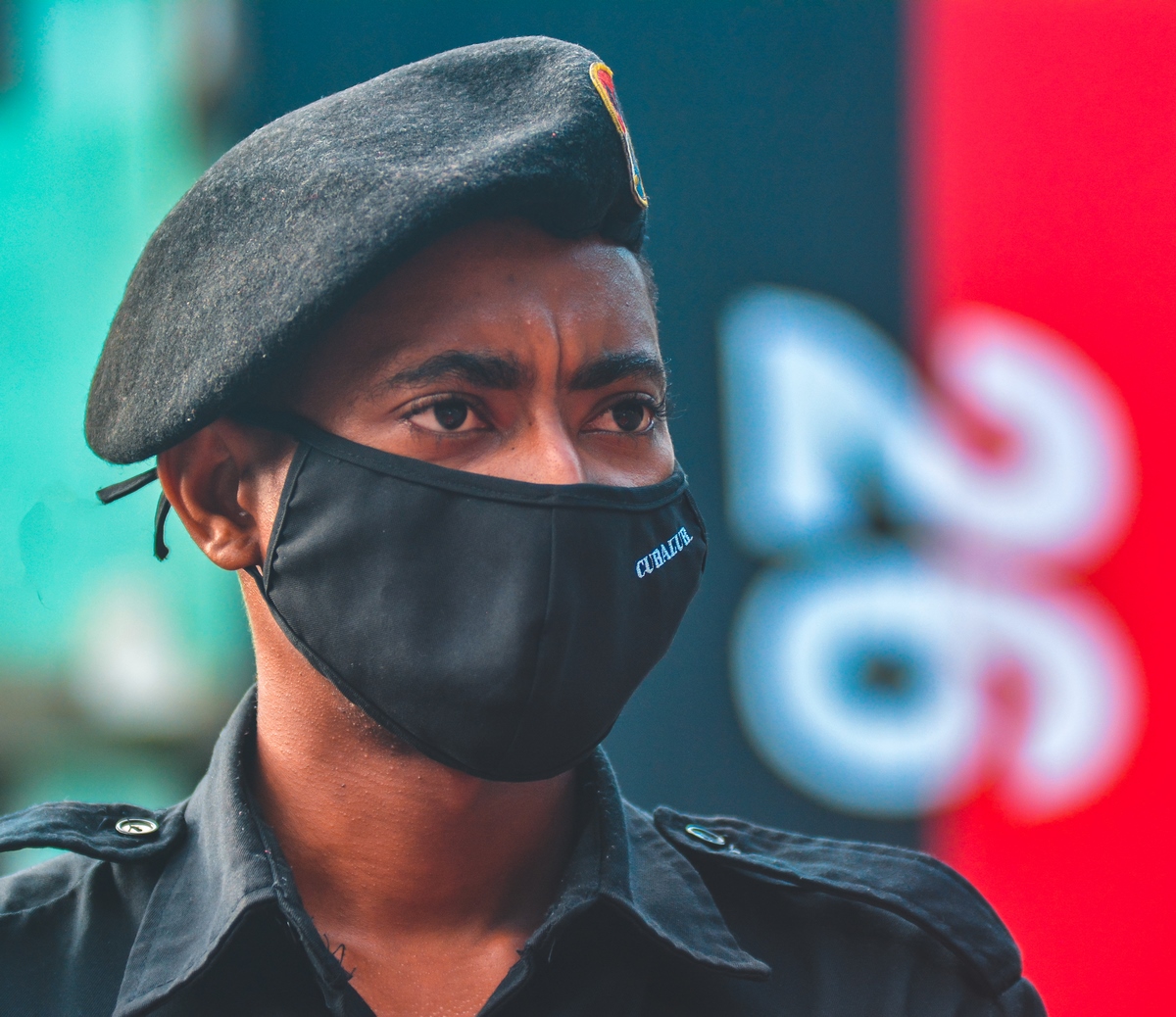
Yan Carlos Boza Castillo.
Olympics Without the Closet

Olympics Without the Closet
New generations are born with a willingness to excel admirably, and it is good that the fire of Olympus burns, without discriminating, in all hearts
Author:

Mileyda Menéndez Dávila |sentido@juventudrebelde.cu
Tuesday 03 August 2021 | 07:22:38 pm
Translated and edited by Walter Lippmann for CubaNews.

Tom Daley, now Olympic diving champion, knits to raise funds to help gay boys who have no support from their families. Author: Taken from the Internet Published: 03/08/2021 | 06:59 pm
Wanting to be someone else is a waste of the person you are.
–Marilyn Monroe
If there’s one thing that distinguishes Olympic competitions, it’s their exhibitionist nature. More than to beat their rivals, whatever the sport, each athlete goes out to demonstrate how far we can go in life when we set out to break the limits that someone else set before and seemed immovable.
In that spirit, records are also broken from the stands, as evidenced by the photo of British diver Tom Daley, the new Olympic champion, kintting in concentration as his teammates compete in the Aquatics Center.
The image is iconic because it confirms another challenge overcome in these Games, historic since their inception for many reasons: Tokyo 2020 is the first Olympics in which at least 130 people with homosexual or bisexual erotic orientation, or non-binary identity, and one trans person will openly compete.
Daley declared, “I am gay and an Olympic champion,” to show that these are not incompatible qualities, as has been taboo for too long in modern sport. And the knitting thing is not just a hobby: his fame and activism on Instagram allows him to sell those pieces and donate resources to shelters for gay boys with no family of their own to give them love and respect. The gold didn’t go to his head because he already had it in his heart.
This is his third Olympics and the second time he has come openly gay, an attitude that inspires more athletes to shed the fear of showing who they are in front of the world’s cameras. One less element of stress for their competing bodies and their minds, pending also pandemic.
“When I was younger I always felt like the one who was alone and different and didn’t fit in. There was something in me that was never going to be as good as society wanted me to be,” he told the Guardian. “I hope that any young LGBT person can see that no matter how alone you feel now. You are not alone. You can achieve anything.”
Triple somersault
Tokyo 2020 is not the first step, but it is the most forceful in bringing sport out of the closet of sexual prejudice. The sports magazine Outsports states that in the London 2012 Games, 23 self-declared athletes participated outside the heteronormative canons; and in Rio 2016 there were 56.
The Japanese event almost triples the number with athletes from 25 countries. To mention the most significant: from the United States there are 30 and from the United Kingdom 15. There are 12 from the Netherlands and 11 from Canada. New Zealand and Australia had nine each, and Brazil seven. And these figures do not include the technical staff and Paralympic athletes who will come later.
They are in sports as varied as swimming, basketball, canoeing, horseback riding, field hockey, golf, fencing, judo, handball, rowing, rugby, cycling, diving, boxing, BMX freestyle, soccer, softball, tennis, athletics, taekwondo, wrestling and volleyball. At first glance, we can see figures with non-binary identities, that is, that break the typical culturally constructed expectation of feminine and masculine.
And if we are talking about challenging stereotypes, one who does so in a forceful way is New Zealand’s Laurel Hubbard, 43, the first trans woman to compete in weightlifting. Registered as a male at birth, in 2013 she completed her physical and legal transition process. Her case has raised strong controversy, but her hormone levels meet the international requirements to compete with women in this sport, which is controversial for gender reasons.
Hubbard did not win a medal, but she was still happy to be in competition, and before the press she thanked the International Olympic Committee for reaffirming its commitment to the principles of Olympianism and making it clear “that sports is something for everyone, that it is inclusive and accessible”.
For now, trans people who take up sports competitively face complaints from those who believe that genes, bone weight or pubertal development give them certain biological advantages, especially if they compete with women. The curious thing is that many of these sportswomen or their predecessors faced similar resistance to breakthrough in sports that were considered very masculine, and proved that they could give an equally honorable and exciting show for the public, something that could also be said of Paralympic competitions.
As we have already said: if in any area society quickly applauds those who leave behind obsolete marks, it is in sports. The new generations are born with the physical and mental disposition to excel in an admirable way, and it is good that the fire of Olympus burns, without discrimination, in all hearts.
Cuba reports 8853 new Covid-19 cases

Cuba reports 8853 new positive cases of COVID-19 and 80 deaths at the close of this Saturday’s press conference
The country accumulates 6 million 208 thousand 857 samples and 332 thousand 968 positive ones
Author: Web Editor
Digital | digital@juventudrebelde.cu
Translated and edited by Walter Lippmann for CubaNews.
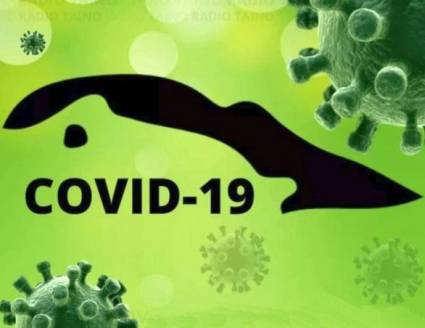
Cuba at COVID-19 Author: Minsap Published: 18/08/2020 | 09:17 am
At the close of yesterday, July 24, a total of 60,467 patients were admitted for clinical epidemiological surveillance, 14,864 were suspected, 3,546 were under surveillance, and 42,147 were confirmed active.
For COVID-19, 56,424 samples were studied, resulting in 8853 positive samples. The country accumulates 6 million 208 thousand 857 samples taken and 332 thousand 968 positive.
Of the total number of cases (8853): 8787 were contacts of confirmed cases, 16 with the source of infection abroad and 50 without a source of infection. There were 6147 medical discharges, for a total of 288,414 in the country.
Of the 8853 cases diagnosed, 4747 were female and 4106 were male. The 8853 diagnosed cases belonged to the following age groups: 1632 under 20 years of age, 20 to 39 years 2609, 40 to 59 years 2983, 60 and over 1629.
Of the 8853 positive cases, 5.0% (441) were asymptomatic, for a total of 103,353 cases, representing 31.1% of those confirmed to date.
Distribution of cases by provinces: 8853 cases
Pinar del Río (149)
Artemisa (278)
Havana (1481)
Mayabeque (278)
Matanzas (1461)
Cienfuegos (794)
Villa Clara (383)
Sancti Spíritus (190)
Ciego de Avila (427)
Camagüey (399)
Las Tunas (300)
Holguín (423)
Santiago de Cuba (735)
Granma (131)
Guantanamo (1181)
Of the 332,968 patients diagnosed with the disease, 42,147 remain hospitalized, 41,788 of them with stable clinical evolution. A total of 2351 patients died (80 during the day), two were evacuated, 54 were returned to their countries, 6147 were discharged during the day, and 288,414 patients have recovered. 359 confirmed patients are being treated in intensive care, including 153 critically ill and 206 seriously ill.
At the mercy of life, not of addictions

At the mercy of life, not of addictions
The person addicted to drugs does not always present such dramatic symptoms and is not always easily identifiable, some manage to maintain a certain degree of functionality, although he or she is not exempt from going through the same substations as any other addict.
Author:
María Esther Ortiz Quesada |digital@juventudrebelde.cuPosted: Saturday 26 June 2021 | 01:24:10 pm.
Translated and edited by Walter Lippmann for CubaNews.
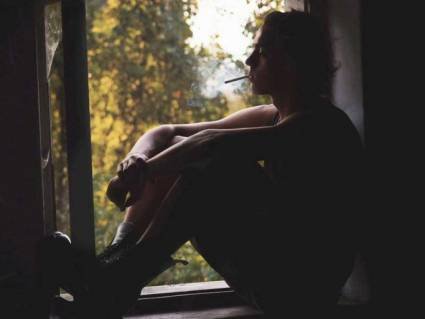 This time drugs will not be at the center of attention, neither them nor their effects on the central nervous system. While it is true that they are among the great protagonists of the drama, I prefer to focus on the real protagonist: the person.
This time drugs will not be at the center of attention, neither them nor their effects on the central nervous system. While it is true that they are among the great protagonists of the drama, I prefer to focus on the real protagonist: the person.
It all started just when drugs stopped being only in nature, stopped being collected by a hand and stopped being used only in ritual sessions under previously established guidelines. When the collecting hand was replaced by a hand that cultivates, harvests, processes and generates substances that alter the state of consciousness and that hand offers those products to other hands in exchange for lucrative goods, then drugs changed the nature of their relationship with people, or rather, people changed the nature of their relationship with natural psychoactive substances and drug trafficking appeared.
This commercial activity, as lucrative as it is destructive, forced the creation of regulations, prohibitions and agreements that sometimes create disagreements, interpretations and misinterpretations. The old legal maxim warns that ignorance of the law does not exempt from compliance and responsibility.
Although the value of knowledge of laws and regulations, agreements and disagreements goes far beyond the warning about compliance, it is the knowledge of the history and evolution of the laws governing the issue of drug trafficking, both for the confrontation and for the understanding of people’s beliefs about drugs and their use, for the design of prevention or treatment programs.
From this perspective, knowledge of the history of drugs in humanity has an effect on the fight against drug trafficking and an indisputable value for the socio-psychological and medical approach to drug abuse, in the same way that laws and agreements nurture history and provide guidelines for treatment approaches and have a preventive effect for many; Prevention and treatment, on the other hand, remove many people from the drug trafficking networks, weaken them and form informal armies of people who, after recovery, pass on their experiences to others with the explicit or not message of BETTER NOT STARTING.
Turning to individuals
There are non-consuming individuals and they are much more frequent than you can imagine, who never established a relationship with any psychoactive substance, including legal ones. There are others who, at the time broke their relationships with any psychoactive substance. Rejecting this reality means looking at it with a narrow, reduced, tunnel vision.
Consumers are divided into two groups: those who consume responsibly. In this group are all those who are medicated with psychotropic drugs, neuroleptics and other substances necessary to reduce discomfort or control illnesses. Although the fact that the substances consumed are prescribed by a physician is not enough to be considered responsible consumption. To do so, consumption must be limited to the substance, dosage, frequency and time indicated by the physician. This is the only way to be responsible.
The essence of the concept lies precisely in the fact that the substance that is introduced into the organism does not cause damage. This is either because the quantity does not exceed the levels that the organism can tolerate, or because the frequency does not interfere with the harmonious functioning of physiological and psychological processes. In other words, both quantity and frequency must be tolerable by the organism. In still other words, both quantity and frequency must be tolerable for the organism. I say this because of my work experience, practically all consumers say that they consume in a controlled manner.
The big problem is that the consumer generally loses or does not have the notion of self-care while the exercise of their critical judgment is diminished, so they cannot evaluate what is tolerable for their organism and what is not.
It is true that not all consumers are classified as addicts, but it is also true that all addicts, before becoming addicts, have been simply responsible consumers or not, but “uncomplicated” consumers.
I consider it important to be able to identify which people, and under what circumstances, become irresponsible consumers, also called abusive consumers. It classifies as irresponsible and abusive consumption, any amount of drugs, legal or not, by pregnant or breastfeeding women, by minors, by people who drive vehicles or handle precision equipment and instruments, people who are on medication, who suffer from mental illnesses, among others.
An overdose occurs as a consequence of irresponsible, abusive consumption by someone who may not even be a frequent user. It is someone who, in a certain place and occasion, in search of enhancing something he/she believes he/she lacks or with the intention of attenuating an uncomfortable or painful emotion or feeling, for which he/she is not able to solve with help and confused or gullible by what he/she has heard in the promotion of drug consumption, comes to believe that drugs are the solution. This type of irresponsible consumption, which leads to acute intoxication, generally occurs in situations of celebration, loss, grief and anger, causing unfortunate situations for others and for the consumer.
The consequences will always be in correspondence with the amount consumed, the type of drugs, the general state of the person, the circumstances in which the consumption occurred and of course, with the personality of the consumer.
Finally, although the subject of irresponsible consumption is much broader, I will refer to addiction, the last stop for the consumer, which in itself, has several substations and none can be described as pleasant, comfortable or successful. To illustrate a little: the consumption of drugs makes the organism work at the mercy of the substance and when this practice becomes frequent, when the doses increase, then the organism is left without possibilities to defend itself. This generates mediate and immediate damages that make the consumer suffer from certain disorders or illnesses that force they to visit hospitals (first substation). On the other hand, drugs make the person not always able to control their impulses, behavior and language, so it is not surprising that sometimes he becomes a victimizer or a victim, with possible legal consequences that sometimes go from court, to the penitentiary systems (second sub-station). Both sub-stations may be creating the basic conditions for the person with abusive or irresponsible consumption, turned the addict to endanger his life either by disease, violence, accidents or suicide (cemetery, third station).
The addicted person does not always present symptoms so spectacular and is not always easily identifiable, some manage to maintain a certain degree of functionality, although he/she is not exempt from going through the same substations as any other addict.
If someone were to ask me what are, from my point of view, the most significant signs that distinguish an addicted person from a non-addict, I could make a long list of indicators ranging from damage to health, to cognitive processes, to the economy, to the family, to social relations, in short, the list would be quite extensive. But I prefer to think of the non-addicted person, the person who lives according to his or her own mandates and not according to the impulses generated by a substance.
Functional non-addicted people prioritize objectives that facilitate them to achieve greater harmony and comfort in their lives and do not subordinate them to obtaining, buying and consuming substances.
The central objectives of functional non-addicted persons can be found focused on the family as a network of support, responsibility and affection; on friends, as that chosen family, with whom they have encounters and misunderstandings and with whom friendship always survives; on functional leisure, that which distracts, recreates and cultivates mind and body; on economic security for oneself, that which distracts, recreates and cultivates mind and body; in the economic security for oneself, for the family and to be able to dedicate time to the spiritual economy and one more objective, that although it is not the last one, it is very important as a social entity and is referred to the certainty of remaining an active and respected social entity.
Unfortunately, although to external eyes this does not occur with some addicts, most of these objectives are not prioritized by the addicted person and are subordinated to the places, situations and people that facilitate the obtaining of drugs and their consumption.
At this point a question may arise, why worry about responsible or low-risk users, if for them this is not the reality?
Let us return to an earlier statement: all addicts are users, although not all users are addicts. Anyone who uses drugs is much more likely than anyone else to go through the addictive process to addiction.
It is not about going to the place of the fire, it is about creating the conditions so that the fire does not occur; it is not only about having care services for addicts, it is about prevention where apparently there are no risks either, in order to enhance the strengths.
It is a matter of knowing the laws and agreements on the subject and making appropriate interpretations, always placing the person at the center of attention. I speak in the singular, because from this singularity arises the plural, the collective, the society, not as a numerical sum. It arises instead as a dynamic interaction of personal, family, local, national histories, of these cultural interactions and of the convictions and beliefs that these dynamics generate, convictions and beliefs that protect or unprotect. I insist, it is the person at the center of attention because any addiction is an affront to human dignity.
From the Classroom…to the Presidency?

From the Classroom…to the Presidency?
Today it will be decided whether Pedro Castillo’s irruption into Peru’s electoral landscape leaves more than its lessons.
Author:

Marina Menéndez Quintero | marina@juventudrebelde.cu
Translated and edited by Walter Lippmann for CubaNews.
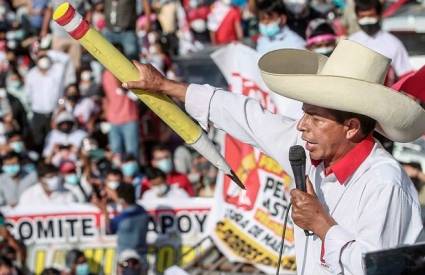
The pencil is the symbol of Peru Libre, which “the Professor” carries to seal his words in the large rallies that have accompanied him. “Word of a teacher”, he assures when he explains to the crowds. Author: Taken from Internet Published: 05/06/2021 | 08:01 pm
It could be said that, as Jair Bolsonaro in Brazil and Nayib Bukele in El Salvador were in their time, he is also an outsider: a man outside politics who is said to have formulated his candidacy as a presidential candidate on the same day that the registration period closed. On that date, he was accepted by Peru Libre. Today, Pedro Castillo has real possibilities of being elected president and of bringing about changes.
But only the primordial character in these matters relates him to those other candidates who, like him, came to the elections virtually outside the parties, when in the formal political sphere they were still little known: the distances between Castillo and those other outsiders of the region are enormous.
His formation as a very humble rural teacher in a remote locality of Puña, in Cajamarca, where he still lives and, recently, a social activism that placed him as leader of two popular mobilizations let him be seen -of course, from a distance- as a man with bullet-proof authenticity that he proclaims wearing the native hat of his homeland, and that he has shielded with his speech. It is the same hat he wore as a “comunero” and “rondero”, as they call in his country the peasants who stand guard to protect their region from the violent ones.
He speaks simply because he is simple; also, perhaps, because of that gift of explaining clearly that a teacher always has and, surely, so that those from below understand. And he “speaks well”, because in academic matters he is not an improvised: he studied Pedagogy at the University and also has a master’s degree in Educational Psychology.
By antagonism, these qualities gain weight when Pedro Castillo has in front of him, for the second electoral round that will decide the presidency of Peru this Sunday, a precocious candidate worn out as a political figure from so much climbing to the proscenium, on whom weighs repeated accusations of corruption and the 25-year prison sentence that her father Alberto Fujimori is serving for those and other sins. A candidate with a portfolio full of the same empty promises that only portend more of the same.
In spite of this, Keiko Fujimori is running for the third time for the first magistracy, and the polls say that she finished the campaign on the heels of her rival, although better positioned than when she started.
Two sides…or two coins?
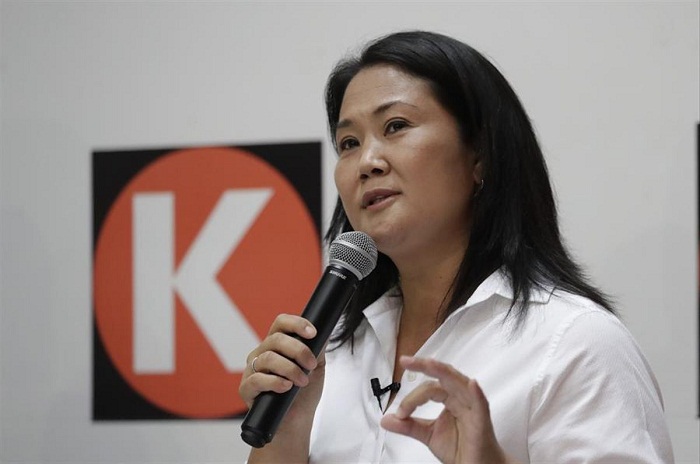
Keiko, the political heir of her father, Alberto Fujimori, would keep the neoliberal model intact. Hers could be a term of social and legal instability because there are legal cases against her. Photo: Reuters.
In the face of the right-wing candidate of Fuerza Peru and her deceitful speech, political “virginity” and, at the same time, the will for change of “the Professor” stands out, as Castillo is known with the respect that the teaching profession awakens, especially among the poor, because for them education is almost always something foreign.
When one examines his program, it may be thought that he gathers the sentiments of the dispossessed and, therefore, that he has been able to overcome the skepticism created by the accusations of corruption that persecuted six former presidents in the last 20 years, and for some of whom exercising the Government turned out to be a form of profit.
The disbelief that this provoked was visible in the almost 30 percent abstention rate and the 17 percent of invalid votes in the first round: altogether, a figure that placed these indices as real winners.
Previously, in November, non-conformity exploded through the resounding demonstrations provoked by the deposition in Congress of the penultimate former president, Martin Vizcarra, because the legislature had once again disregarded the laws and the people.
A cardinal aspect is that the aspirant of Peru Libre has included among his proposals the installation of a Constituent Assembly to draft a new constitution, a demand to which the radicalized demands of the street protests were directed.
Pedro Castillo has said that he will sponsor foreign investment, but “with order”, and has criticized that they take the money out of the country, for which he speaks of nationalizing the wealth, as well as the renegotiation of the tax stability contracts with the big companies. He has promised what he calls a “second agrarian reform”.
In addition, he proposes the universalization of the health system, the creation of the Ministry of Science and Technology “because Peru cannot be only a primary exporting country”, he has said on Twitter. He also proposes an increase of the budget for research in development and free entrance to higher education, as well as decentralizing public universities.
However, the first focus of his eventual government would be aimed at combating the pandemic, for which he has proposed, among other measures, the creation of a council composed of scientists, public health technicians and researchers, in order to design effective measures against Covid-19.
The polls
He was a man virtually unknown in Peru two months ago, until he was the most voted candidate in the other round with only 19 percent of the ballots. A surprise.
Now he seems a step away from victory. But the margins of difference with Keiko are so close that it is difficult to predict.
It could be said that the flood of endorsements has come to Castillo in a “natural” way if one takes into account the scarcity of resources of his campaign and the same austerity and relative youth of the party that welcomed him and launched him into the arena, and against the backdrop of dirty campaigns.
Peru Libre was founded in 2007 under the slogan “Force born of the people!”, with the declared purpose in its statutes of “the search for social justice expressed in the welfare of man as the highest aspiration, making Peruvian society more equitable, less exclusive and that all Peruvians have equal opportunities formerly denied, striving for development from each of the angles in which they act and develop”.
The right-wing insists on branding Castillo as a communist in order to close the way to him, re-editing an old fear that seemed to be buried with the era of McCarthyism.
As expected, the conservative media campaign has been furious against him and includes other accusations against the candidate and the leaders of Peru Libre, without discarding the lawfare chapter that could be the accusations of money laundering that are once again waved against the general secretary of the group, Vladimir Cerron, wielded this week in a hurry in the clear desire to disqualify the leftist candidate until the last minute, as in a final sprint.
Thus, the voting intention has been “polarized”. The candidates represent antagonistic programs and, therefore, very different social classes.
Everything could be seen, a little superficially, in this way: those who want the status quo have closed ranks behind Keiko, even valuing that of “the lesser evil”, just to stop the opponent. The poor and those who want change are rallying behind Castillo.
Opinion polls show that she is stronger in the northern departments and cities; he has preeminence in the countryside and the central and southern regions.
Seven days ago, the latest polls showed the aspirant of Peru Libre in the lead, but only two points and tenths ahead of his rival, whom three weeks ago he was leading, however, by up to ten percentage points.
The resounding 51 percent that opinion polls showed for “the Professor” last Sunday, and the 48.8 percent registered by Fujimori, suggested a technical tie.
Whatever the result, the “news” was already carried by the surprising emergence of Pedro Castillo into political life. Even if he did not win, this could be his start as leader of the sectors that bet on a different Peru.
Silencing the Study of Race and Equity

In the U.S., legislation is being passed to silence analyses on race and equity
The same historical thread: slavery-Tulsa massacre-George Floyd and is intended to hide the facts to cover up scars and, above all, wounds still open and bleeding in the polarized U.S. society.
Author:

Translated and edited by Walter Lippmann for CubaNews.
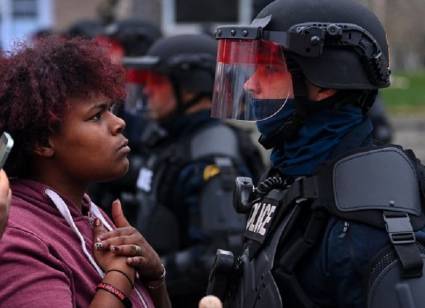
Confronting America’s systemic racism Author: Joshua Lott Posted: 05/29/2021 | 10:49 pm
Is America a racist society? Yes. Absolutely and categorically so. Facts abound to exemplify the assertion. A review of some of the incidents of more immediate times reaffirms it.
However, it is not only the acts of violence, of police brutality, especially against Blacks and Latinos, nor the rise of extreme right-wing, xenophobic and fascistic groups and organizations, that show this visible trace. Neither do the economic and educational inequalities that undermine development opportunities.
In the first days of May, the governor of the state of Idaho, Republican Bradley Jay Little, signed a bill whose purpose is supposedly not controversial: to prohibit public schools and colleges from teaching that “any sex, race, ethnicity, religion, color or national origin is inherently superior or inferior”.
It might seem positive; however, this sidesteps, indeed, eradicates, conversations about race and equity, as if they have no relevance in a society where they remain one of the biggest and most divisive problems, rooted in a historical development that had as its roots the near annihilation and dispossession of native peoples and the enslavement of men and women forcibly brought from faraway Africa.
Idaho is not unique in the trend, as a dozen states, including Iowa, Louisiana, Missouri, New Hampshire, Oklahoma, Rhode Island and West Virginia, have also introduced bills that would prohibit schools from teaching “divisive,” “racist” or “sexist” concepts.
According to a paper published by USA Today, such legislation attacks “critical race theory,” a movement of scholars and civil rights activists, which questions and critically examines how the legacy of slavery (in August 1619 the first cargo of enslaved Africans arrived on the shores of present-day U.S. territory) and systemic racism still affects American society today and are everyday experiences for people of African descent.
Thus, this legislative pattern – especially in Southern and Republican-dominated states – is seen as a backlash against teaching anti-racist lessons in schools, a barrier to learning true and hidden histories in order to entrench the racism against African descendants in the U.S. society.
The pattern is seen as a backlash against the teaching of anti-racist lessons in schools, a barrier to the learning of true and hidden histories to enthrone the socio-economic dominance of white elites, who also cover up class-based profiteering, whatever the skin color of the exploited.
Two key events
These final days of May mark two dates a century apart, the first anniversary of the murder of George Floyd in Minneapolis, when the relentless knee of policeman Dereck Chauvin squeezed his neck for more than eight minutes and prevented him from breathing. It was a crime that shook America and continues to shake it, and outraged the world. Then there is the centennial of a massacre of which very few in the northern nation are aware: the Tulsa massacre.
In Tulsa, Oklahoma, dozens of Black citizens were murdered -some estimates reach more than 300 victims of the racist barbarism of white mobs, joined by the police and the National Guard-, between the night of May 31 and June 1, 1921, in the Greenwood area, which was known as the Black Wall Street, due to the economic prosperity and intellectual development achieved by its inhabitants, and which was reduced to ruins and ashes in the fires.
Baptist minister and civil rights activist Jesse Jackson wrote in the Chicago Sun-Times: “Few even know about the massacre. It has not even been taught in Tulsa public schools until this year. Though a hundred years old, the massacre raises questions of justice and decency that
of justice and decency that America cannot avoid.”
Yet a significant part in size and power of the United States avoids it and does its best to sidestep it.
The detractors of critical race theory, the conservative elements that deny the existence of systemic racism in America, hoist its eradication and not only try to “discredit” it by calling it “Marxist”, above all they impute it to be a plan to “teach children to hate their country”, therefore, they are a threat to American society and the nation.
The Trump administration opposed the teaching of that history in public schools, asserting that it was “divisive and un-American propaganda.” Trump said, “Students in our universities are inundated with critical race theory. This is a Marxist doctrine that holds that America is an evil, racist nation, that even young children are complicit in oppression, and that our entire society must be radically transformed.”
Another reality
A recent study by Reflective Democracy, a group working to build a democracy in America that works for everyone “because it reflects who we are and how we live in the 21st century,” found that white men hold 62 percent of all elected offices despite being only 30 percent of the nation’s population, exercising minority rule over 42 state legislatures, the House of Representatives, the Senate and state offices from coast to coast.
The analysis added that women hold only 31 percent of the offices despite being 51 percent of the population and “people of color” hold only 13 percent despite constituting 40 percent of the population. It also recalled that 43 states in the Union are considering or have already passed laws that would allow them to apply voter suppression, which targets precisely those vulnerable segments – Blacks, Latinos, native Americans and women.
Some analysts recall that this wave against critical race theory only “crystallized” with Trump, but was awakened when Barack Obama came to the White House, which “was shocking and traumatic for people who had always imagined the United States as a white nation,” according to Adrienne Dixson, a professor at the University of Illinois and author of the book Critical Race Theory in Education.
On both sides, the debate has grown over the past year with the nationwide, ethnically diverse, age-group-wide activism of Black Lives Matter which burst onto the social scene of the national conservative organization Parents Defending Education, whose purpose is to confront what they consider “divisive and polarizing ideas in the classroom,” as Critical Race Theory sees it.
On their website Parents Defending Education released a study in which they claim that 70 percent of respondents said it is not important for schools to “teach students that their race is the most important thing about them.” that 74 percent opposed teaching students that whites are inherently privileged and that Blacks and other people of color are inherently oppressed. They also say that 69 percent opposed teaching in schools that America was founded on racism and is structurally racist. Likewise, they say and that 80 percent oppose the use of classrooms to promote student political activism.
Is American society polarized? Undoubtedly, and in my opinion, this is an extremely dangerous element, a boiling cauldron with no safety valve.
Subscribe to Blog via Email
| M | T | W | T | F | S | S |
|---|---|---|---|---|---|---|
| 1 | 2 | 3 | 4 | 5 | 6 | 7 |
| 8 | 9 | 10 | 11 | 12 | 13 | 14 |
| 15 | 16 | 17 | 18 | 19 | 20 | 21 |
| 22 | 23 | 24 | 25 | 26 | 27 | 28 |
| 29 | 30 | |||||

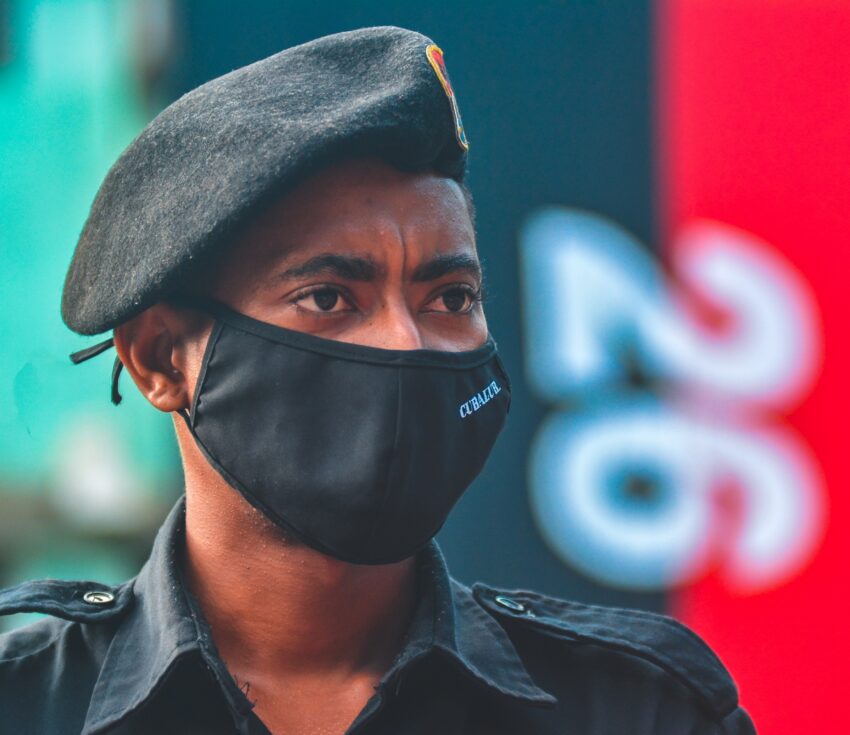
You must be logged in to post a comment.